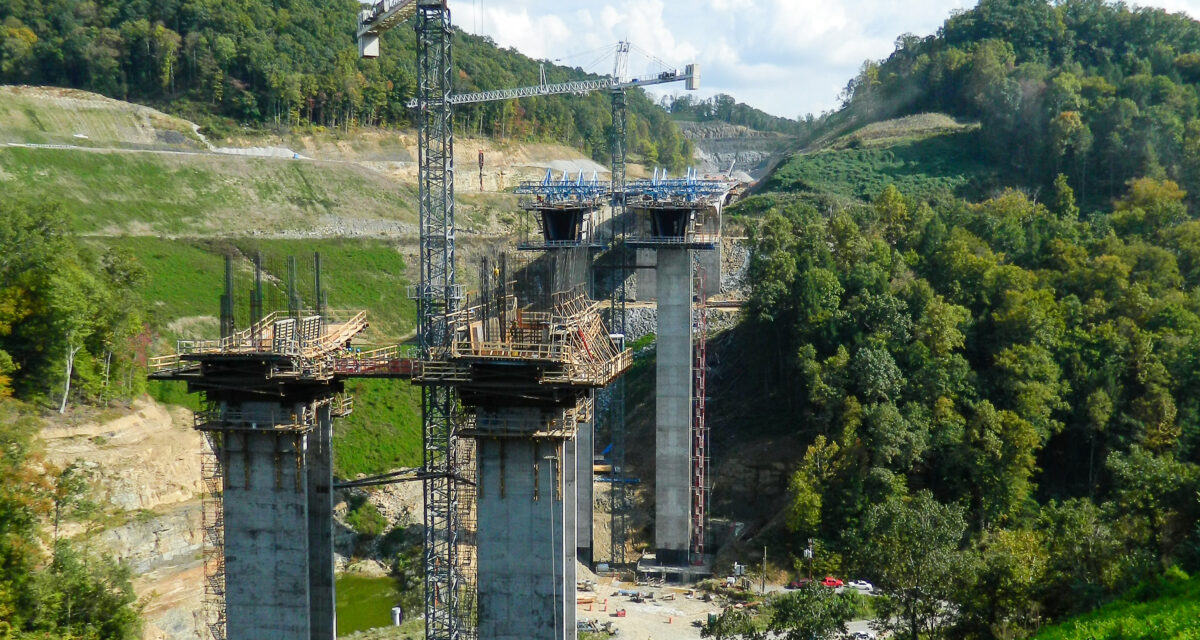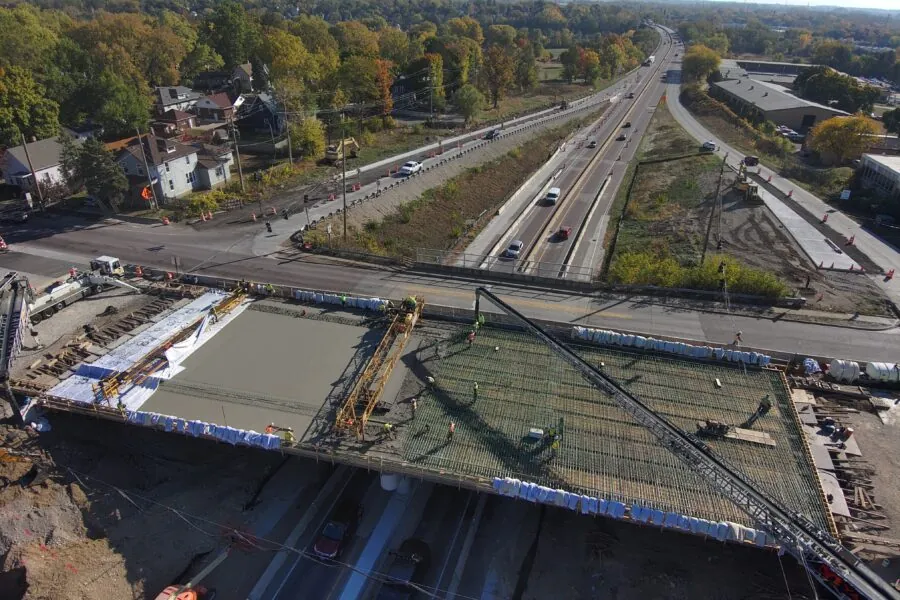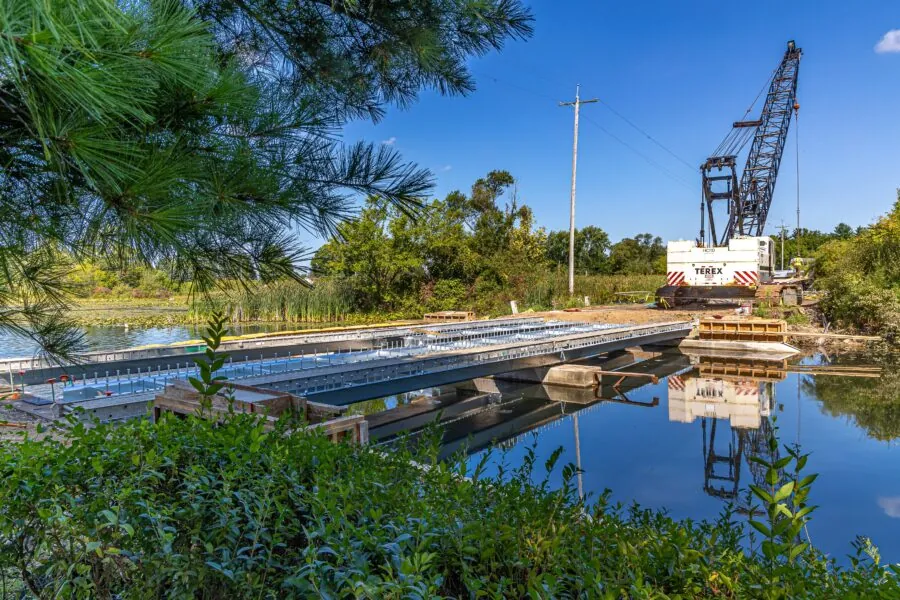

US Route 460 Connector Phase I
Project Details
Client / Owner
Virginia Department of Transportation
Focus Areas & Services
Size
Twin segmental bridges each 1,733’ long
0.8 miles of four-lane divided highway
Over 2.5 million cubic yards of excavation and embankment fill
Delivery Method
Design-Build
Construction Value
$90 million
Awards
2013 #1 of National Top 10 Bridges in Roads and Bridges Magazine’s
2017 American Segmental Bridge Institute Bridge Award of Excellence
RS&H provided design-build oversight, construction engineering and inspection, and independent assurance/independent verification services to VDOT as prime for this award-winning project. Construction included twin segmental bridges over Grassy Creek, the construction of a bridge crossing Route 768, 0.8 miles of four-lane divided highway and an access ramp to Route 80, and secondary connections to Routes 609 and 693 from Route 80. The new roadway and bridge approaches are carved out of the mountainside, requiring both blasting and excavation.
The twin segmental bridges are each 1,733’ long with a deck width of 43’, a maximum height of 265’, and a longest span of 489’. The cast-in-place segmental superstructure was built by the balanced cantilever erection method. Each structure consists of over 2.6 million pounds of reinforcing steel, 150 miles of post-tensioning strand, and over 16,000 CY of concrete. In order to complete the bridges, over 2.5 million cubic yards of excavation and embankment fill on the Virginia side of the approach was necessary. The foundations for the structures consist of a combination of pre-bored h-piles, spread footers, and micro-piles. The six spans of each bridge are supported by five h-shaped columns reaching a height of 220’. The main spans of 489’ include varying box depths from 31’ to 12.5’, giving the structures an aesthetically pleasing arch shape. The end spans of each structure utilize 78” modified bulb-T beams. The construction of the bridges utilized new specifications and requirements related to segmental bridge durability and quality, as well as a pre-grouting mock-up to test the performance of several different cable grouts to select the most appropriate one for construction. An on-site batch plant was utilized to deliver concrete on-demand, with the ability to produce 120 CY of concrete per hour.

The Hunts Creek Bridge consists of three spans with a foundation of pre-bored h-piles in the abutments and drilled shafts in the piers. The pier columns support the flat slab bridge crossing Hunts Creek and Route 768.
RS&H’s responsibilities included construction management, project controls, design reviews, shop drawing submittal reviews, RFI submittal coordination, CPM schedule reviews, change order review and coordination, constructability reviews, claims analysis, monthly and final estimate reviews, public information coordination, construction inspection, and material testing. Construction inspection included oversight of all concrete operations, bridge erection, post-tensioning and grouting, earthwork operations, and final project closeout activities. Primavera Contract Manager was used to facilitate management of the contract, offering a solution to VDOT to manage payment, material processing, submittal processing, RFI management, change order management, and document control for this complex project.



